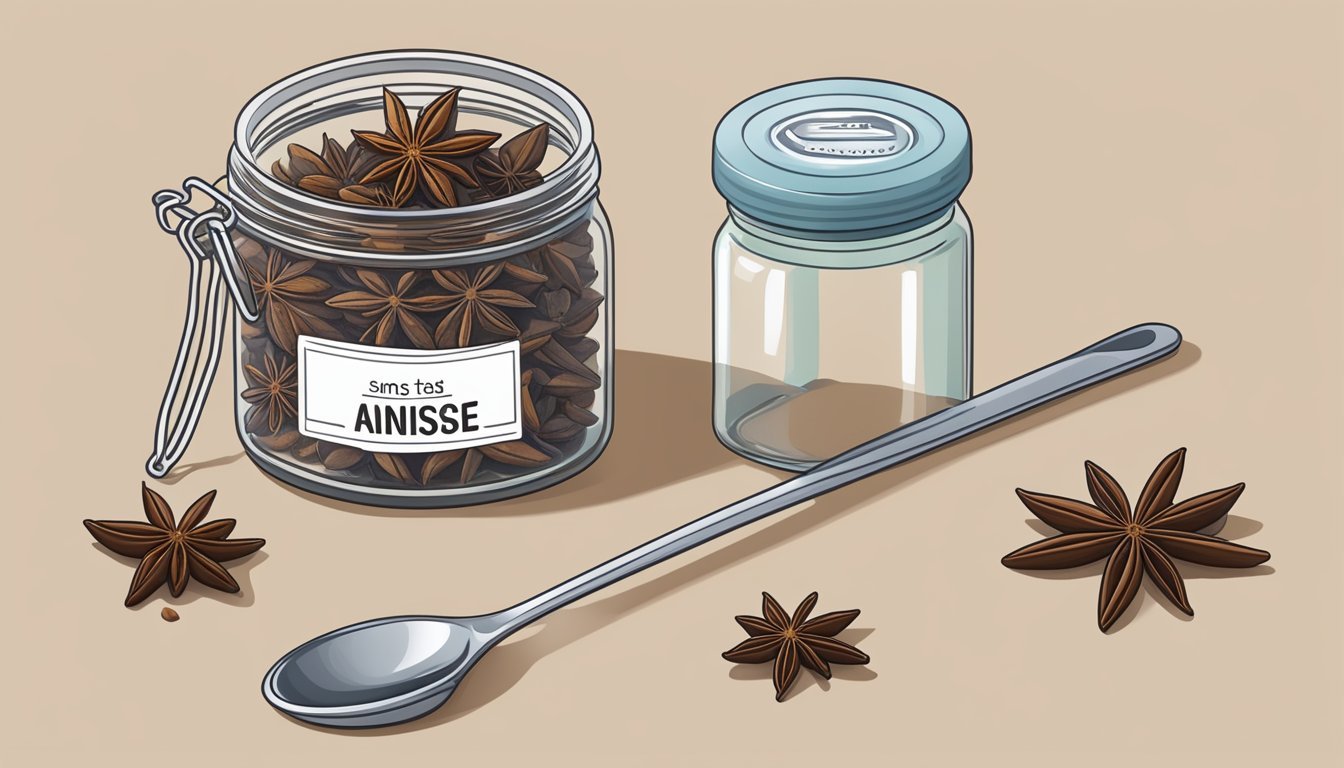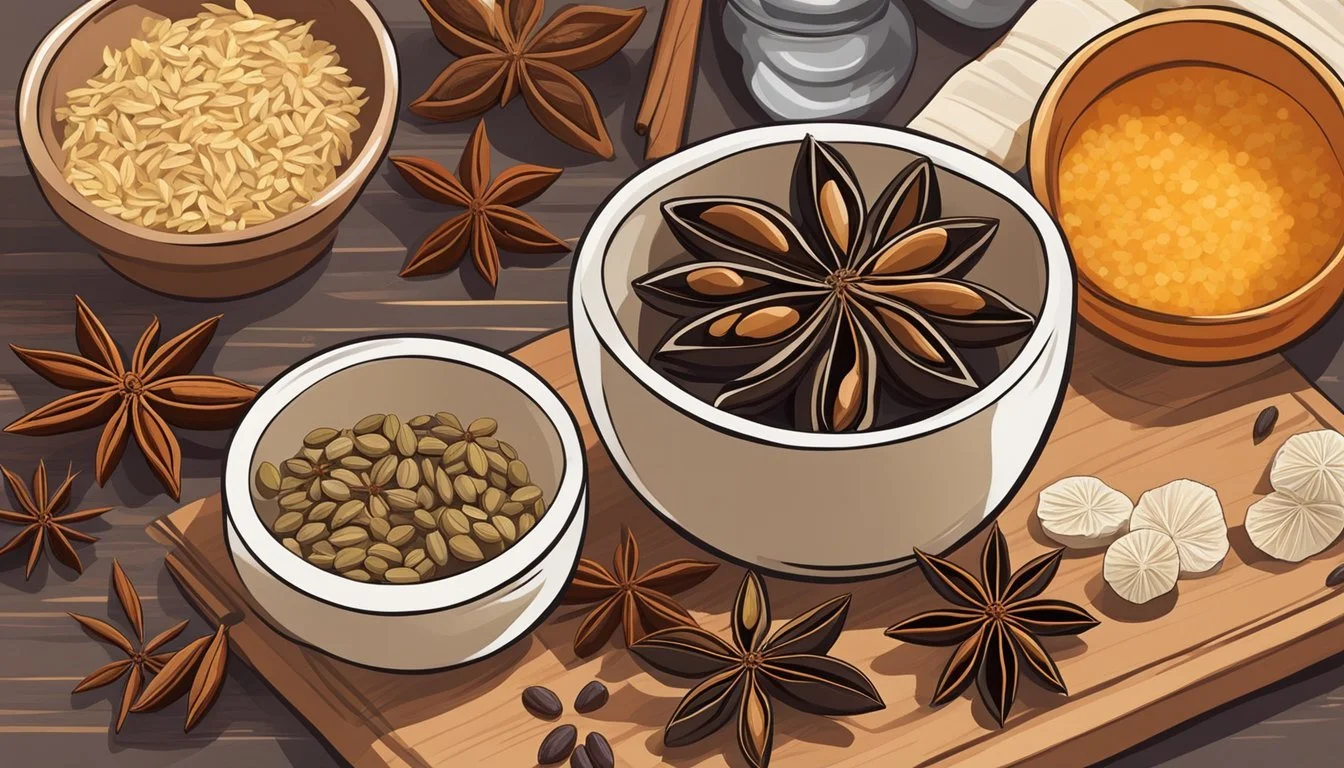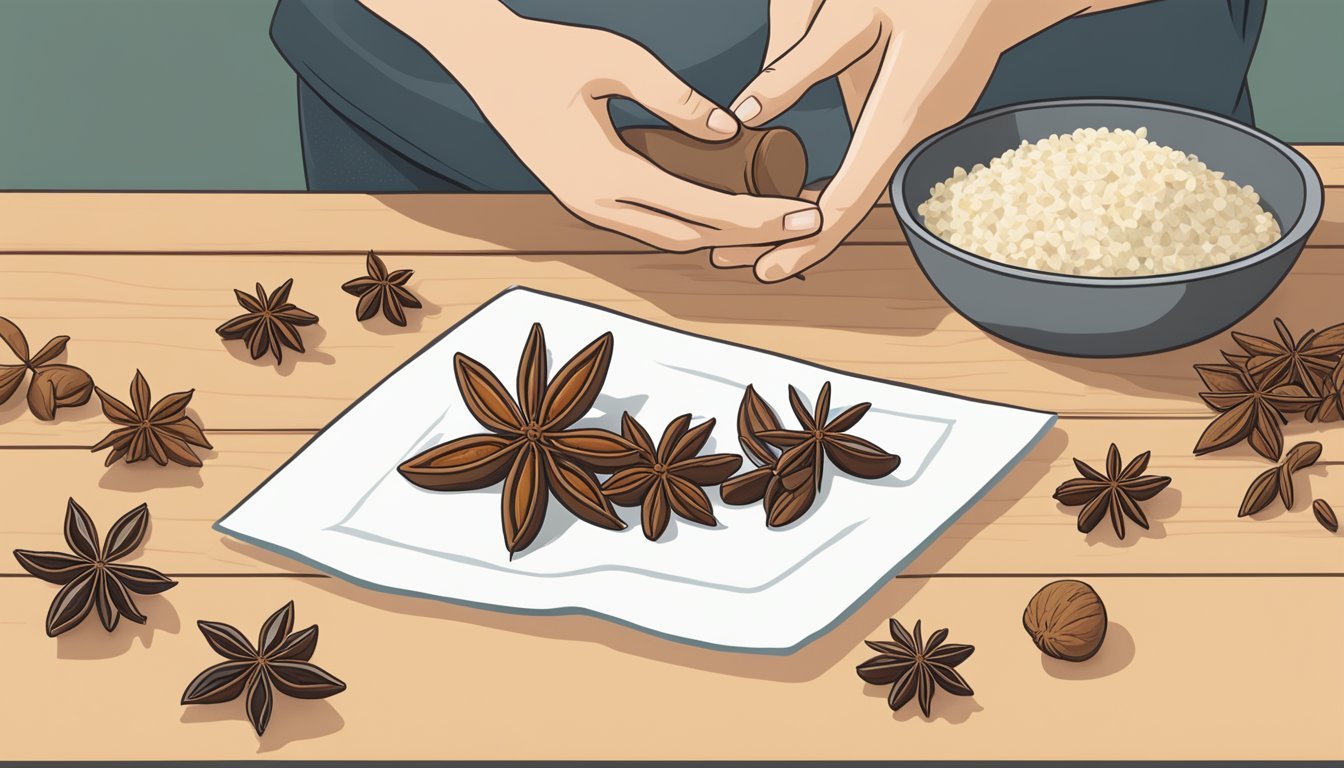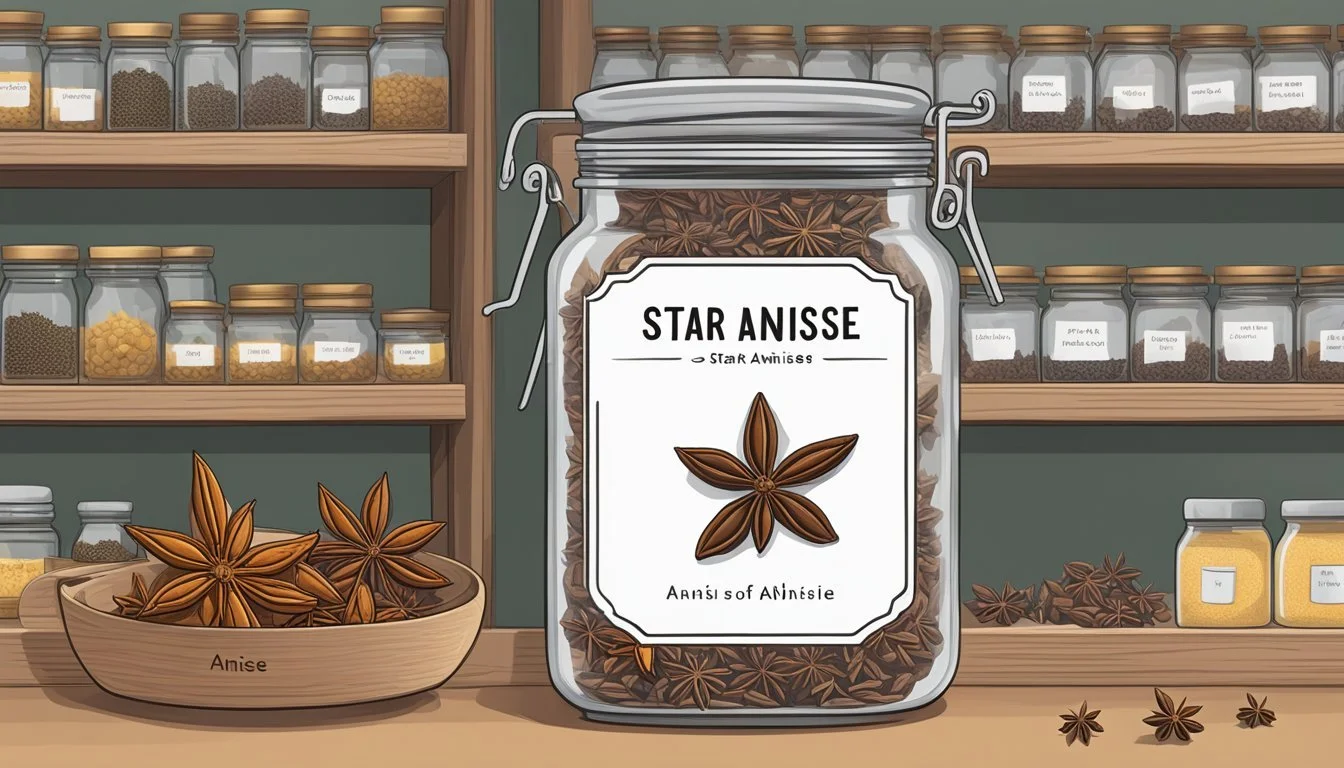How to Substitute Star Anise for Anise Seeds
A Flavorful Alternative Guide
Star anise and anise seeds are two distinct ingredients commonly used in cooking to infuse dishes with a warm, sweet, and aromatic flavor reminiscent of licorice. In the culinary world, understanding the subtleties of these spices and how to substitute one for the other can be particularly useful when a recipe calls for star anise and only anise seeds are available, or vice versa. Star anise, with its robust and slightly more bitter flavor profile, is a key component in Chinese five-spice powder, adding complexity to a variety of dishes ranging from savory meats to sweet pastries.
Anise seeds, smaller in size and of a different botanical family, offer a more delicate and sweet taste. They are often employed to enhance the flavor of desserts, bread, and certain spirits. When star anise is not on hand, anise seeds can serve as a suitable substitute by capturing the essence of the licorice-like taste, although the strength of their flavor can differ considerably from that of star anise. This necessitates adjustments to the amount used in order to achieve a comparable taste without overpowering the dish.
In cooking applications where the licorice flavor of star anise is desired but the spice is unavailable, home cooks and professional chefs alike can incorporate a blend of anise seeds and other complementary spices or opt for individual substitutes that mimic star anise's unique flavor. The choice of substitute depends on the specific requirements of the recipe and the desired intensity of the licorice note, ensuring that dishes achieve the intended taste profile even in the absence of the original ingredient.
Understanding Star Anise and Anise Seed
Star anise and anise seed are both known for their anise flavor, which resembles licorice. However, these spices have unique botanical identities and culinary applications.
Star anise is the fruit of the Illicium verum, an evergreen tree native to Southwest China and Vietnam. Its hallmark is the star-shaped pericarp, which encloses a single seed. Each point of the star typically spans up to an inch in diameter, displaying a deep reddish-brown hue. Star anise emits a stronger, sweet licorice-like flavor with additional notes reminiscent of cinnamon and cloves.
Anise seed, on the other hand, comes from the Pimpinella anisum plant, a herbaceous annual that is part of the parsley family. Contrasting in appearance, anise seeds are small, oftentimes only 1/8 to 1/4-inch long schizocarps. The seeds have a milder licorice flavor and are sometimes considered to possess a spicier bite compared to their star-shaped counterpart.
When it comes to culinary use, both spices can be found whole or ground:
Star Anise: Usually used whole or ground; both the pod and seed contribute to the flavor profile.
Anise Seed: Commonly available in seed form or ground into a powder.
Despite their similarities in flavor, star anise and anise seed differ significantly in potency. Star anise is typically more aromatic, thereby requiring a lesser quantity when substituting for anise seeds in recipes. Here's a brief comparison:
Feature Star Anise Anise Seed Botanical Name Illicium verum Pimpinella anisum Appearance Star-shaped pod with single seed Small, ridged seeds Flavor Profile Strong licorice, sweet, with warm notes Milder licorice, slightly sharper Culinary Uses Integral in Chinese five-spice Used for baking and in liqueurs
Understanding these differences is essential when considering substitutions, as it will impact the final taste and aroma of the dish.
Flavor Profiles and Culinary Uses
Understanding the unique flavor profiles of star anise and anise seeds, as well as their applications in cooking and baking, is essential for a successful substitution.
Distinct Characteristics of Star Anise
Star anise, bearing a shape that resembles an eight-pointed star, is renowned for its warm, sweet flavor with a robust licorice essence. It is significantly more pungent than anise seeds, often associated with fennel seed and licorice root in flavor. Whole star anise is a key ingredient in Chinese five-spice powder, alongside other spices like cinnamon. The ground form of star anise is integrated into an array of desserts and savory dishes, bringing a depth of flavor particularly prominent in Asian cuisine.
Anise Seeds in Cooking
Anise seeds provide a less intense licorice flavor when compared to star anise but share a similar sweet and spicy profile. They are typically used ground or whole in various baked goods, such as cookies and cakes, and are appreciated for their ability to enhance the flavors of desserts without overpowering them. In cooking, they are subtly integrated into savory dishes, often in Mediterranean cuisine, where they provide a hint of sweetness to balance the savory components.
Common Substitutes for Star Anise
When a recipe calls for star anise and it’s not available, several spices can act as a substitute to mimic its licorice-like flavor. Careful consideration should be given to the quantity and blend of alternatives due to the intensity and aroma differences.
Using Fennel Seeds as a Substitute
Fennel seeds are an excellent substitute for star anise, given their similar licorice notes. The flavor of fennel seeds is milder, so they can be used in a higher volume.
Ratio: For 1 teaspoon of ground star anise, one can use about 2 teaspoons of ground fennel seeds.
Fennel Seeds Substitution Table:
Ground Star Anise Fennel Seeds 1 teaspoon 2 teaspoons
Moving beyond the scope of fennel, several other spices can serve as alternatives.
Other Spice Alternatives
Other spices can replace star anise, either alone or in combination to achieve a comparable flavor profile.
Chinese Five Spice Powder: A complex blend that includes star anise, cinnamon, fennel, pepper, and cloves. Starting with smaller amounts is recommended due to its intensity.
Ground Cloves: Cloves can impart a warm, aromatic flavor similar to the spiciness of star anise though they are more potent.
Allspice: It offers a mix of flavors such as cinnamon, nutmeg, and clove, making it a possible substitute.
Nutmeg: While nutmeg does not have the licorice flavor, its warm and nutty taste can replace the background notes provided by star anise in many dishes.
Alternative Spice Substitution Table:
Ground Star Anise Substitute Quantity Recommended 1 teaspoon Chinese Five Spice Powder Start with 3/4 teaspoon 1 teaspoon Ground Cloves Use with caution, start with 1/4 teaspoon 1 teaspoon Allspice Start with 1/2 teaspoon 1 teaspoon Nutmeg Start with 1/2 teaspoon, adjust as needed
In all cases, the substitutions should be adjusted to taste, given the variances in strength and nuances of the selected spice in comparison to star anise.
Substitution Ratios and Measurements
When replacing star anise in a recipe, precision with anise seeds is key, as the flavor profile varies slightly. The seeds impart a subtly different taste; hence, the ratio must be adapted accordingly.
For recipes requiring whole star anise, the general guideline is:
Whole Star Anise: 1 piece
Anise Seeds: 1/2 teaspoon
This ratio allows for the difference in intensity between the whole spice and the seeds.
In the case of ground star anise, the substitution with ground anise seed should be proportional. They can be swapped in equal measures for most recipes, though some may prefer slightly less to adjust for taste nuances.
Ground Star Anise: 1 teaspoon
Ground Anise Seed: 1 to 1.5 teaspoons
Substitutes for whole star anise can also include a blend of spices. For instance, some suggest combining caraway seeds and tarragon when anise seeds are unavailable.
Whole Star Anise: 1 teaspoon
Caraway Seeds and Dried Tarragon Mix: 1 teaspoon total (equal parts)
It's crucial to consider the overall flavor of the dish when implementing substitutes, as different spices will interact uniquely with other ingredients. Some experimentation may be necessary to achieve the desired result.
Star Anise in World Cuisines
Star anise holds a prominent place in various global culinary traditions, particularly in Asian countries where it is a staple spice in numerous classic dishes.
Star Anise in Asian Cuisine
In Chinese cuisine, star anise is a key component of Chinese five-spice powder, which combines the warmth of cinnamon, the sweetness of fennel, the sharpness of pepper, and the richness of cloves. This quintessential blend adds a complex flavor to meats and stir-fries. Star anise is also integral to the creation of master stocks and red braised dishes, imbuing them with its characteristic licorice-like aroma.
Moving to Vietnam, star anise is essential in the broth of the nation's signature dish, pho. It provides a warm and aromatic nuance that is instantly recognizable. In other South Asian cuisines, star anise pairs with cardamom and cloves in the spiced tea known as chai, which is enjoyed for its comforting and distinctive taste.
Global Culinary Influences
Star anise transcends its Asian origins and is utilized in the culinary landscapes of several other regions. The sweetness and licorice flavor of star anise complement the savory notes found in Mediterranean cooking, where it occasionally finds its way into recipes for stews and soups, as well as in the preparation of certain liqueurs.
Its versatility across Asian cuisines and influence in worldwide recipes showcase the adaptability of star anise. As cooks and chefs from various cultures have embraced this spice, it has become an understated yet irreplaceable ingredient that can transform the flavor profile of a dish, a blend, or an entire culinary tradition with its pungent, sweet, and warm qualities.
Recipes and Cooking Tips
When cooking with star anise, achieving the right flavor profile is crucial. The following tips will aid in substituting anise seeds for star anise in a variety of dishes, ensuring a palatable balance in seasonings.
Creating Flavorful Spice Mixes
For recipes that call for star anise, such as Chinese five spice powder, a homemade mix can be crafted using ground anise seeds.
Star Anise to Anise Seed Ratio: Replace star anise with anise seeds in a 3:4 ratio. For instance, if the recipe requires one star anise, use about 3/4 teaspoon of anise seeds.
Note: Since anise seeds have a slightly different flavor from star anise, they're milder and less pungent, so this substitution works well in baking and spice rubs where star anise’s stronger licorice flavor could overpower the dish.
Infusions and Marinades
Anise seeds are effective in creating infusions for marinades, broths, or stews.
Method: To infuse anise seeds into liquids for stews, curries, or broths, one should slightly crush the anise seeds to release their essential oils. Add them early in the cooking process to allow the flavors to meld with the meat and other ingredients.
Tip: Remember that star anise has a more robust flavor compared to anise seeds, so one may need to adjust the quantity used. Taste and adjust accordingly to achieve the desired flavor.
By adhering to these tips, chefs can confidently adapt their recipes that traditionally depend on star anise by implementing anise seeds to maintain the essence of the dish.
Considerations for Dietary Restrictions
When substituting star anise with anise seeds, individuals with dietary restrictions should be mindful of potential allergies and dietary preferences. Anise seeds and star anise both contain anethole, the essential oil responsible for the licorice flavor, which can cause allergic reactions in sensitive individuals. It's essential to check for allergies to aniseed or compounds found within it.
Allergens Star Anise Anise Seeds Anethole Common Component Common Component Other Varies by Product Varies by Product
Those adhering to specific dietary preferences—such as organic, non-GMO, or avoiding artificial additives—may want to ensure that their substitute of choice aligns with these values. Organic anise seeds, for example, can provide a natural replacement for star anise without compromising such preferences.
When considering health benefits, anise seeds have been recognized for their potential digestive benefits and antispasmodic properties. However, the potency and effect may vary when compared to star anise, so individuals seeking specific health outcomes should take this into account. It’s advisable for them to consult a healthcare provider for personalized advice.
In summary, whether using star anise or anise seeds as a substitute, it's crucial for individuals to confirm that the product is suitable for their dietary needs, to be aware of any allergic potentials, and to understand the health benefits and potency of these options.
Understanding the Health Benefits
When considering the substitution of star anise for anise seeds, it's beneficial to understand their health advantages. Both spices are renowned for their medicinal properties and are used not just for flavor but also for their therapeutic qualities.
Star anise is a rich source of antioxidants and contains a compound known as shikimic acid, which has antiviral properties. This makes it a valuable ingredient in alleviating cold and flu symptoms. In traditional medicine, it's also utilized as a digestive aid, helping to alleviate gas and bloating.
Anise seeds, while similar in flavor due to the shared compound anethole, have a distinct health profile. They are reputed to have antispasmodic and antibacterial effects, which can be beneficial for digestion. Anise seeds may also assist in reducing symptoms of indigestion and might relieve menstrual pain.
Nutrient Star Anise Benefits Anise Seeds Benefits Vitamins & Minerals - Enhances immunity with Vitamin C. - Offers a range of B vitamins for metabolic function. Digestive Aid - Relieves gas and bloating. - Possess antispasmodic properties to aid digestion.
Both spices contain essential vitamins and minerals that contribute to overall health. For instance, star anise includes small amounts of vitamins A and C, while anise seeds contain B-complex vitamins and minerals such as calcium, magnesium, and iron. Their inclusion in diets can support various health systems and may complement a balanced diet and lifestyle.
Storage and Shelf Life
When it comes to storing both star anise and anise seeds, the key factor is to maintain the freshness and potency of their flavors. Proper storage can significantly extend their shelf life.
Whole Spices: Star anise, as a whole spice, generally retains its potency longer than ground variants. To preserve its freshness, it should be stored in an airtight container, away from light, heat, and moisture. Ideally, one should place it in a cool, dark cupboard or pantry.
Storing whole star anise:
Airtight container
Cool, dark location
Ground Spices: Ground anise seeds lose their flavor more quickly than whole seeds, so it's important to store them correctly. An airtight container is crucial, as it prevents moisture and air from degrading the spice.
Star Anise: Whole pods can last for up to two years if stored properly.
Anise Seeds: They can maintain their quality for about three to four years in whole form.
Storage recommendations:
Use glass or metal containers with tight-sealing lids.
For best results: Buy spices in smaller quantities to ensure that they remain fresh until they are used.
In summary, both spices will have an extended shelf life when stored as whole spices, protected from moisture, air, and light in airtight containers. Ground spices should be used more rapidly to take full advantage of their flavor profiles.









